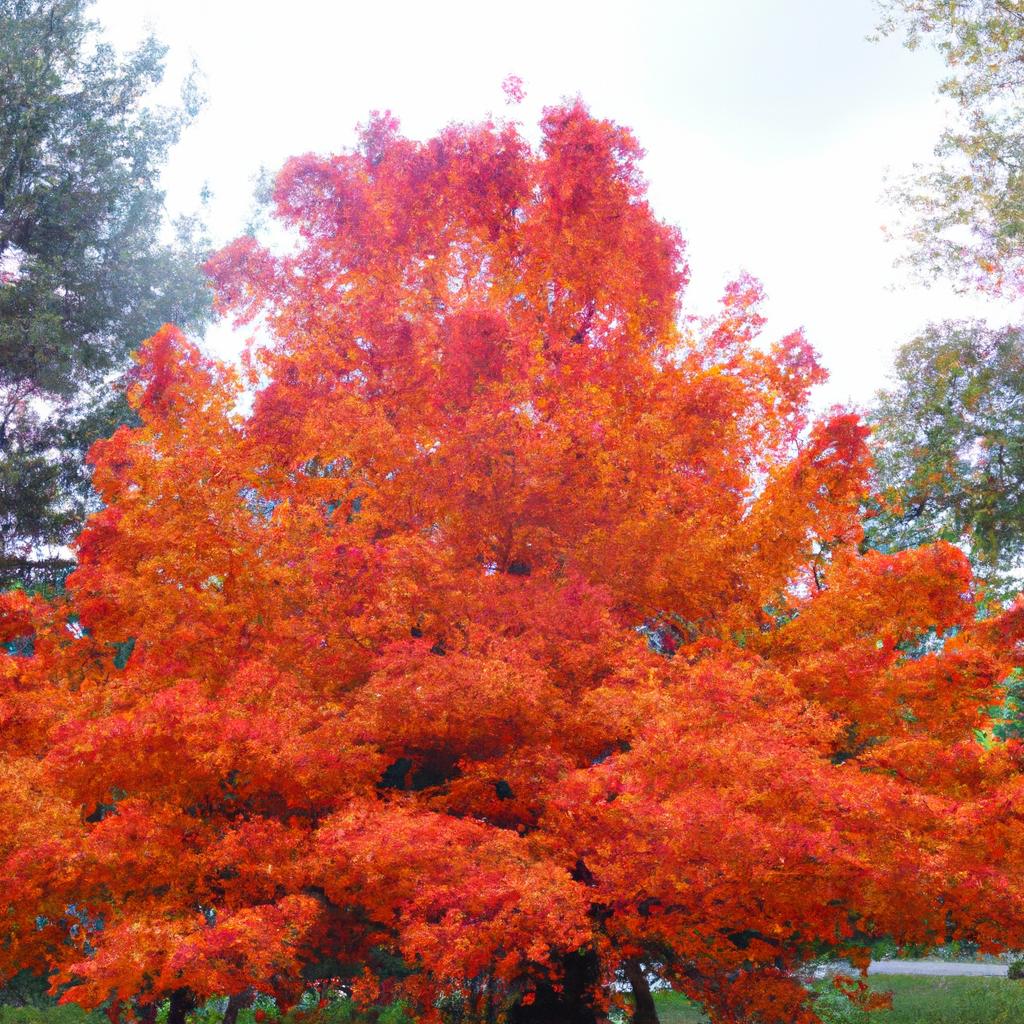As I stroll through the park, I find myself captivated by a magnificent tree standing before me. Its leaves boast a breathtaking blend of red, orange, and yellow, resembling the strokes of a skilled artist’s brush. This is what I affectionately call “the most colorful tree.” Have you ever been fortunate enough to encounter one?
In this article, we will embark on a journey to explore the beauty and significance of these vibrant trees. From various types to the contributing factors behind their stunning colors, we will delve into what makes these trees so essential to our environment. Moreover, we will provide valuable tips on planting and nurturing your very own colorful trees. Get ready to immerse yourself in the world of nature’s most vivid creations!
Types of Colorful Trees
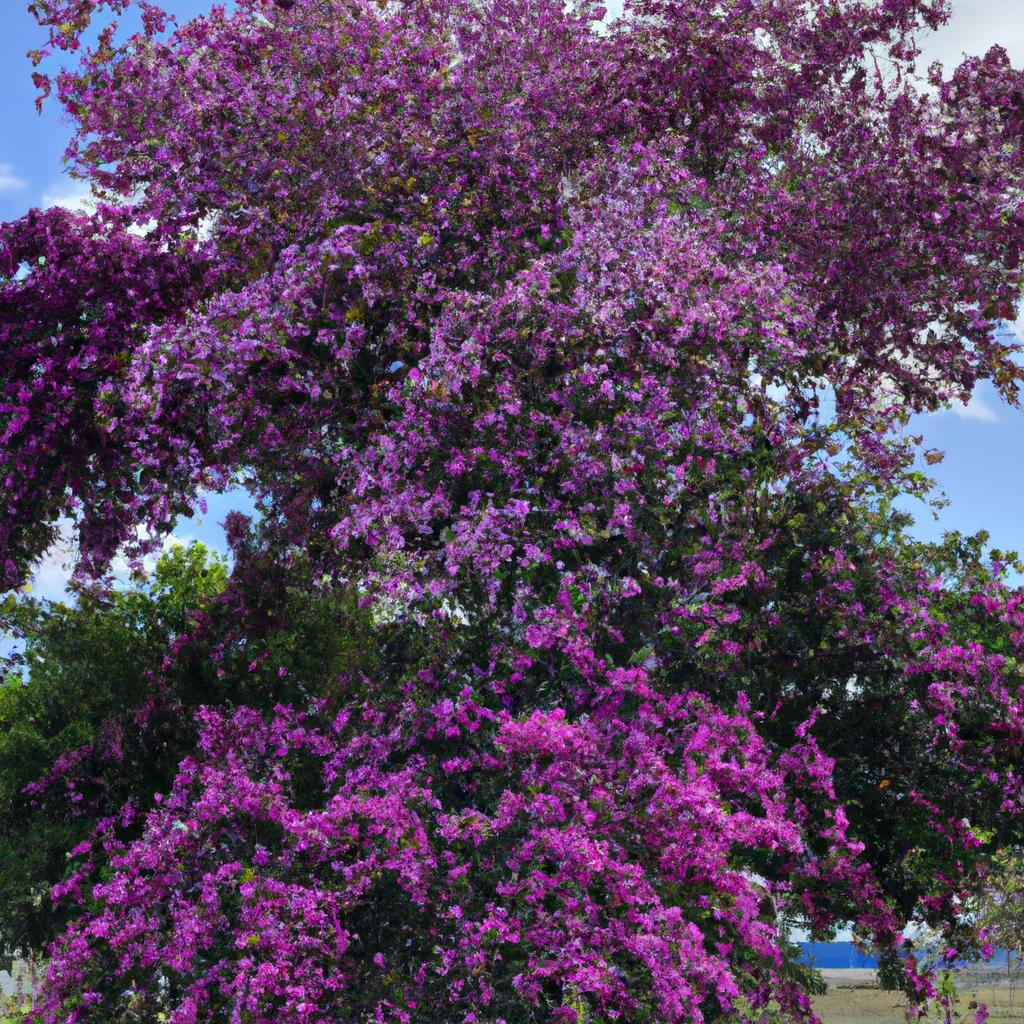
If you wish to infuse splendor into your garden or simply bask in the beauty of Mother Nature, colorful trees are an excellent choice. Here are a few popular types that showcase captivating hues:
Japanese Maple Trees
Japanese Maple Trees are renowned for their breathtaking fall colors. Delicately sculpted foliage ranging from bright red to deep purple adorn these trees. You can easily find them in nurseries or online, and they thrive in shady areas.
Dogwood Trees
Dogwood Trees stand out proudly with their striking colors. These captivating beauties produce large, showy blooms in shades of pink, white, and red. Garden centers and online platforms offer a wide selection of Dogwood Trees, which flourish in full sun or partial shade.
Redbud Trees
Native to North America, Redbud Trees dazzle with vibrant pink or purple blooms during springtime. These trees are low-maintenance and beginner-friendly, making them a perfect choice for anyone eager to nurture their own colorful haven.
Crape Myrtle Trees
Crape Myrtle Trees enchant with their exquisite summer blooms in shades of pink, red, and purple. They flourish in warm climates and are readily available in nurseries or online platforms.
Each type of colorful tree possesses distinctive characteristics that set them apart. Be sure to research which tree suits your garden or landscape best.
Factors That Contribute to the Tree’s Color
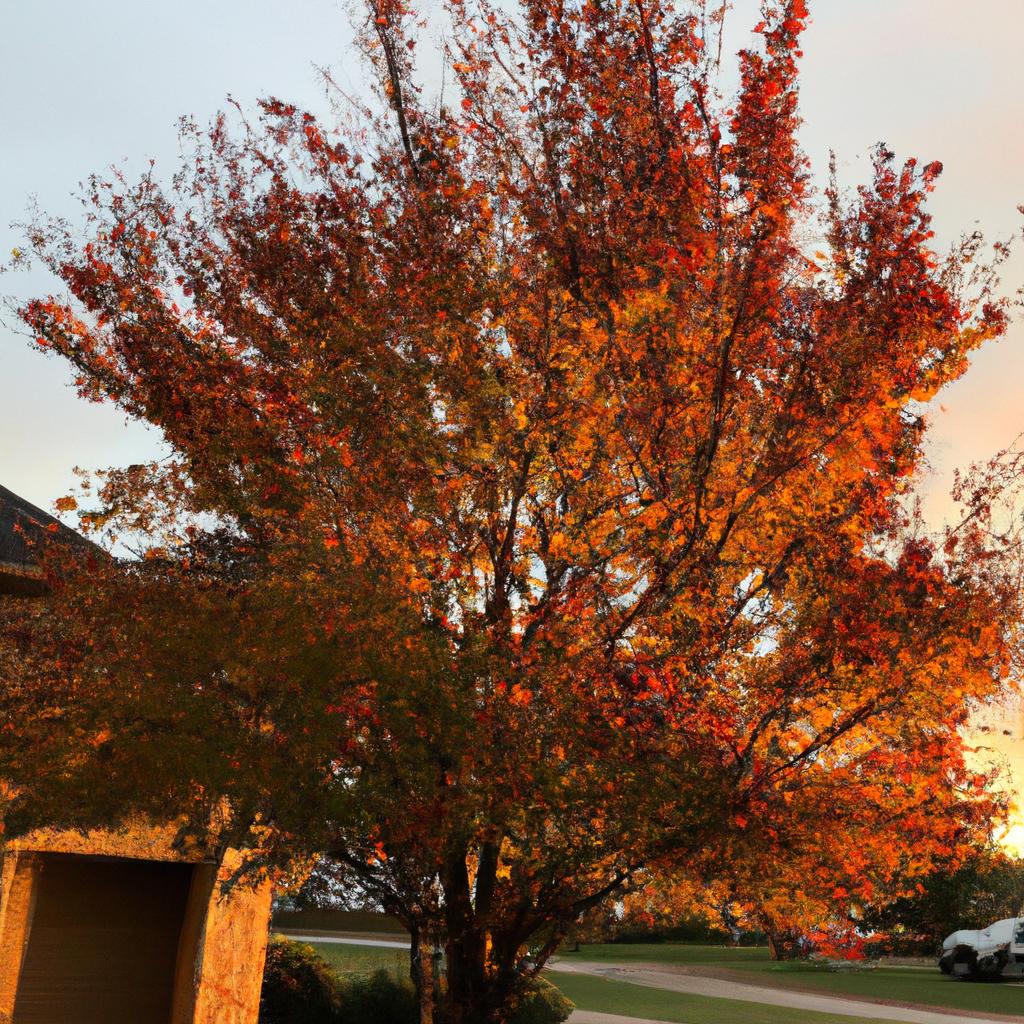
Ever wondered what imbues trees with their vibrant colors? Believe it or not, it’s not by mere chance! Numerous factors come together to create the captivating colors we witness in trees. Here are the most significant contributors:
Environmental Conditions
The environment in which a tree grows significantly affects its color. Trees bathed in sunlight boast more vivid and brilliant hues compared to those in shaded areas. Sunlight aids in the production of chlorophyll, which gives leaves their green color. As chlorophyll breaks down, other pigments like carotenoids and anthocyanins become visible, showcasing the stunning reds, oranges, and yellows we associate with autumn.
Soil Types
Surprisingly, the soil in which a tree thrives can influence its color. Different soil types contain varied nutrient levels, impacting a tree’s ability to produce pigments. For instance, if a tree grows in nitrogen-deficient soil, its leaves may be yellow or pale green instead of the vibrant green we typically expect.
Climate
Climate also plays a role in a tree’s color. Trees in cooler climates exhibit more vibrant colors compared to their counterparts in warmer regions. Lower temperatures expedite the breakdown of chlorophyll, allowing other pigments to become more pronounced. Furthermore, trees facing periods of drought or stress may display richer colors as a response to distress signals.
Understanding these factors empowers you to choose the optimal location and conditions for planting your own dazzling array of colorful trees. In the following section, we will explore the significance of color in trees.
The Significance of Color in Trees
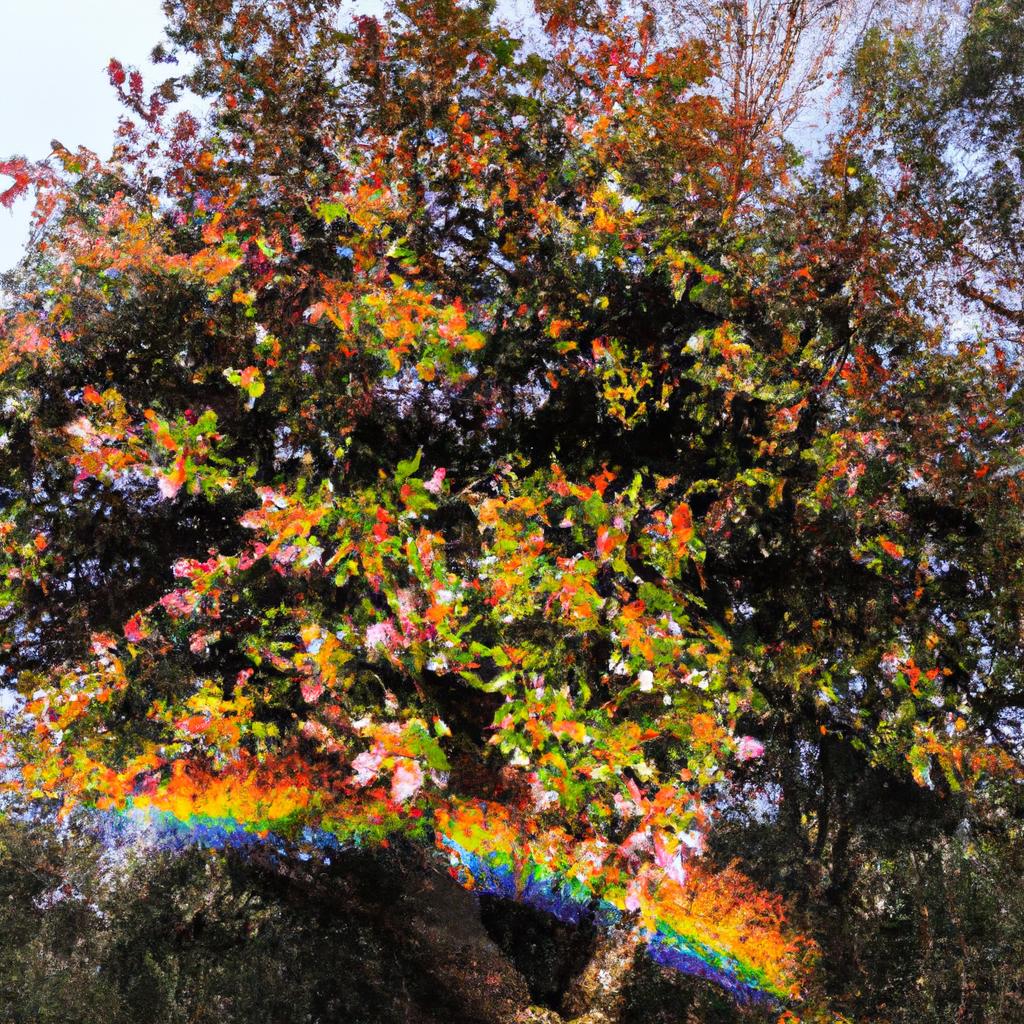
Colorful trees are undeniably a visual treat, but did you know their colors have significance beyond aesthetics? In this segment, we will uncover the various ways colors play a crucial role in trees.
Roles of Color in Tree Survival
One primary purpose of color in trees is to attract pollinators. Bees, butterflies, and other insects are drawn to the vibrant hues of certain trees, aiding in the spread of pollen and ensuring the trees’ survival. Additionally, some trees change color to signal nearby flora to prepare for the approaching winter.
Colors also contribute to photosynthesis, the process through which trees convert sunlight into energy. Chlorophyll, the pigment responsible for a plant’s green color, plays a vital role in this process. However, other pigments such as carotenoids and anthocyanins also participate in photosynthesis and may even shield the tree from harmful UV rays.
How Humans Benefit from Colorful Trees
Colorful trees offer more than just visual delight – they provide numerous benefits to humanity. First and foremost, they contribute to our mental well-being. Research has shown that exposure to nature, including colorful trees, reduces stress and anxiety levels. Furthermore, these vibrant trees aid in air purification, removing pollutants and elevating overall air quality.
Cultural and Historical Significance
Colorful trees have played significant roles in human culture and history. In Japan, cherry blossom trees are revered and celebrated during the annual hanami festival. In North America, fall foliage augments tourism as people flock to witness the vibrant colors displayed by trees in transition. Indigenous cultures recognize trees as symbols of life and growth, deeply intertwined with spiritual beliefs.
These magnificent trees are an integral part of our natural world, embodying both beauty and functionality. In the upcoming section, we will provide valuable tips for planting and nurturing your own colorful trees.
Tips for Planting Colorful Trees
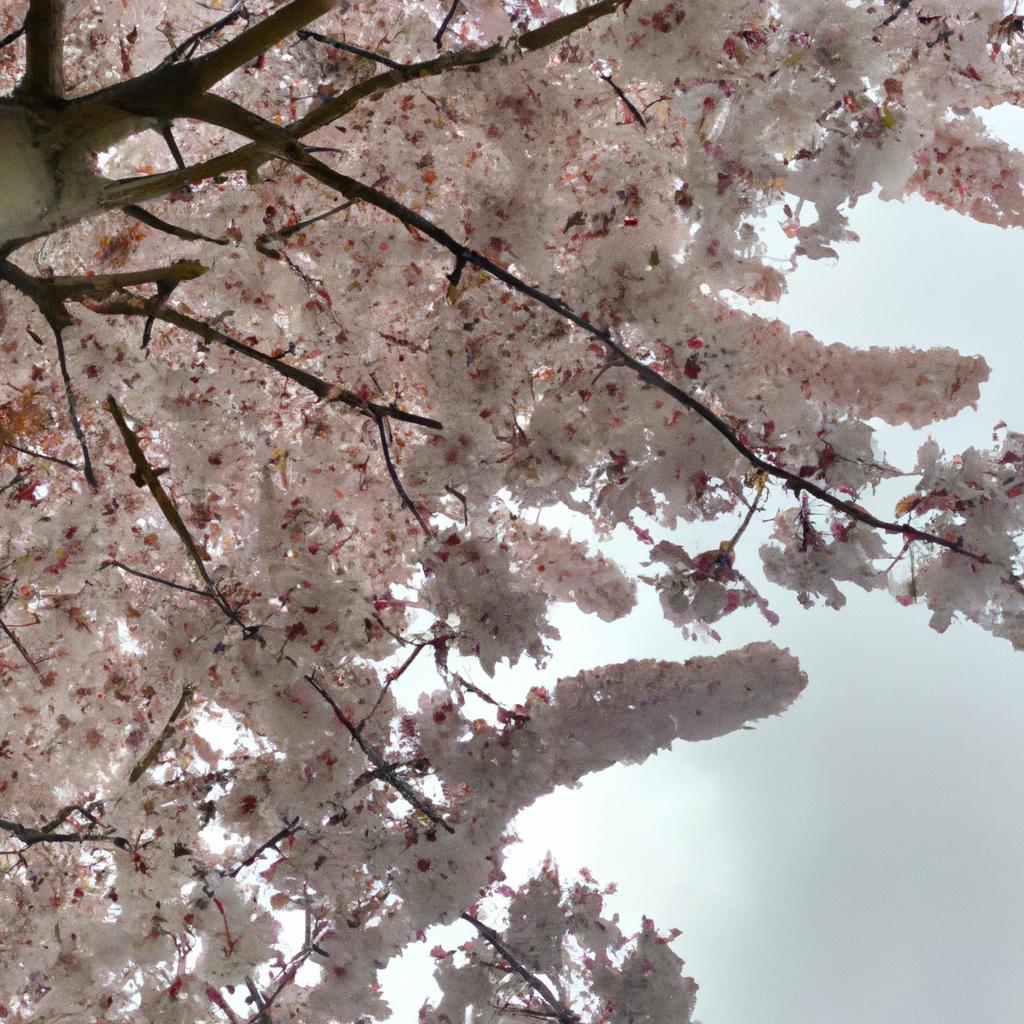
If you yearn to infuse your yard or garden with vibrant colors, planting colorful trees is an excellent option. Here are some essential tips for successfully planting and caring for your own colorful trees:
Best Practices for Planting and Caring for Colorful Trees
-
Choose the right tree for your location: Before diving into planting, ensure you select a tree that thrives in your specific climate and soil conditions. Research different species of colorful trees and their specific requirements to ensure the perfect match for your location.
-
Plant at the optimal time: The best time to plant a tree is during fall or early spring when the soil is moist, and temperatures are mild. This grants the tree sufficient time to establish its roots before the scorching summer heat or harsh winter cold.
-
Prepare the soil: Ensure the soil is well-draining and nutrient-rich. Incorporate compost or other organic matter to enhance soil quality.
-
Provide regular watering: Newly planted trees require consistent watering to establish their roots. Deeply water the tree once a week or more frequently during hot, dry weather.
-
Prune regularly: Pruning aids in shaping the tree and eliminating dead or diseased branches. Utilize clean, sharp tools, and prune during the dormant season.
Ideal Locations for Planting
-
Sunlight: Most colorful trees thrive in ample sunlight, necessitating at least six hours of direct sunlight per day. Choose a location that fulfills this requirement.
-
Space: Select a location that offers ample space for the tree to grow to its full size without interfering with other trees or structures.
-
Soil: Opt for well-draining, nutrient-rich soil. If your soil quality is inadequate, consider planting in a raised bed or container.
Maintenance Tips
-
Mulch: Surround the base of the tree with mulch to retain moisture and suppress weed growth. Ensure the mulch remains a few inches away from the trunk to prevent rot.
-
Fertilize: Regular fertilization benefits colorful trees, particularly during spring and fall. Choose a fertilizer suitable for your tree species and follow the manufacturer’s instructions.
-
Pest and disease control: Keep an eye out for pests and diseases that may harm your tree. Conduct regular inspections and promptly address any issues that arise.
By adhering to these guidelines, you can ensure the thriving growth of your colorful trees, turning your yard or garden into a haven of natural beauty for years to come.
Conclusion
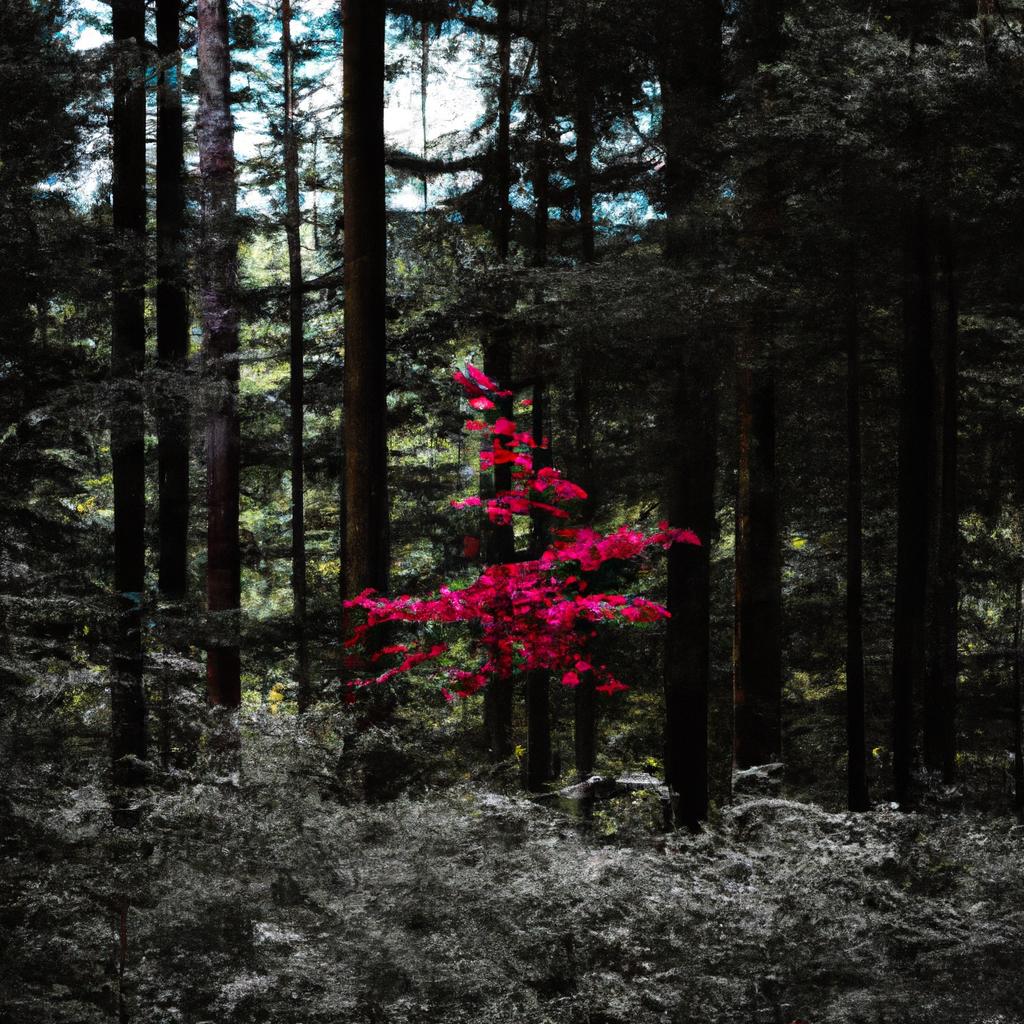
In conclusion, the most colorful tree surpasses mere visual splendor; it plays a vital role in our environment, providing us with cleaner air, soothing shade, and even sustenance. Planting and nurturing these vibrant trees enables us to contribute to the improvement of our planet and communities.
Throughout this article, we have embarked on a journey exploring various types of colorful trees, the factors influencing their colors, and their significance to both humanity and nature. Additionally, we have provided invaluable tips for successfully planting and caring for your own colorful trees.
At TooLacks, we embrace and celebrate nature’s wonders. We hope this article has inspired you to appreciate and care for the most colorful trees that surround you. Let’s embark on this planting adventure together and revel in the breathtaking beauty bestowed upon us by nature!
